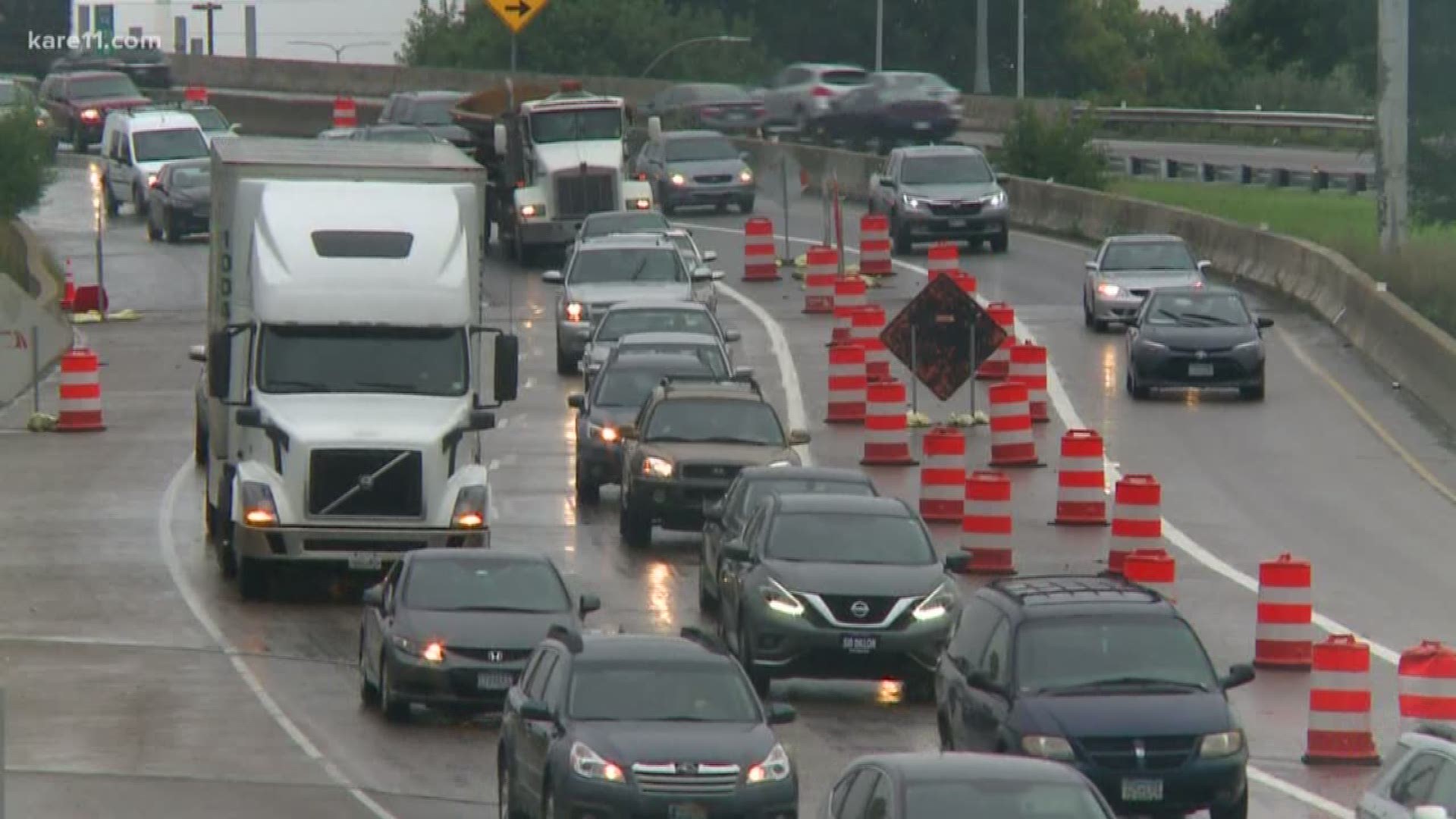MINNEAPOLIS -- You've likely complained or heard someone complain that people "forget" how to drive when it rains.
Over the past few days drivers have dealt with several wet commutes in the metro, but did you ever wonder why the rain slows down traffic?
MnDOT Traffic Operations Director Brian Kary says there are two main factors.
First, drivers typically go slower in the rain due to slippery conditions and low visibility.
Second, drivers subconsciously increase their spacing between cars to avoid an accident.
"By doing those two things, that actually affects how much capacity the roadway can handle," Kary explains.
According to MnDOT, a highway’s capacity is around 2,000 cars per lane, per hour.
Congestion happens when the number of cars exceeds that capacity, like what we see in rush hour every day.
"The rain can actually cause congestion to set in earlier and it might actually last longer as well because more people are getting trapped in it," Kary explains.
MnDOT studies traffic patterns in various conditions, but Kary says it’s difficult to put an actual number on how much time the rain adds to your commute.
However, a 2006 study conducted by the Federal Highway Administration suggests rain can slow down your commute by 13-25 percent.
“That sounds about right,” Kary says. “A lot of it has to do with timing, too. If the rain is going to hit right during the rush hour it’s certainly going to have an effect on your commute.”
Based on those numbers, if your commute normally takes about 30 minutes on a good day, heavy rain would add three to seven and a half minutes to your daily drive.
For those who have to drive a little farther, like an hour or more, the rain can easily add more than 15 minutes to your commute.
However, those numbers are more than 12 years old and are based on traffic patterns in Washington D.C., not the Twin Cities.
Kary also cautions other factors like construction and accidents may affect those numbers as well.
“We’ll certainly see more accidents out there during the rain,” Kary says.
Numerous studies also suggest snow has an even greater effect on traffic congestion.
Based on their findings, a light snowfall can make traffic up to three times slower than rain does.

